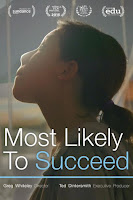
I had the pleasure of going into Krista Glosson's AP Biology class. In the class I came to visit, she used the Question Formulation Technique to foster students connections between topics. The students were into it. They worked collaboratively, were inspired, and wanted to learn more. Krista was able to walk around and see the learning taking place. The students knew what they learned and they knew that their teacher did too. What follows is a reflection of a post-visit discussion I had with Krista and what her students felt about the process.
Teacher: Krista Glosson
Now that we have a working definition of learning and some values behind it, how are you putting your beliefs into practice?
I am giving students an opportunity to determine their own beliefs about my statement, then to branch out in a direction that interests them while they construct their knowledge around their belief. It was refreshing for all of us to give them a challenge that did not have a right or wrong answer.
What were the students learning?
The students were researching specific examples of cell signaling pathways to apply the information we had previously covered in class. The process allowed them flexibility and an opportunity to stretch themselves to answer a challenging question while we worked on asking good scientific questions.
 How do you know they learned?
How do you know they learned? I talked with each group and they were excited to share their new information with the class the next day.
How do they know they learned?
They were able to make a connection between the material we learned in class and the information they chose to learn. They were confident in sharing their interpretation with the class.
Student: Avi Patel
Now that we have a working definition of learning and some values behind it, how is your teacher putting the beliefs into practice?
She beats the knowledge into us! Just kidding! For real though, she connects with us on a level further than just academic. She understands and communicates with us, and that I think is the best values a teacher can have; Connection, Communication, and Understanding
 What were you learning?
What were you learning?We were learning whether or not a fault in signaling pathways causes diseases or not.
How do you know you learned?
I walked out of class knowing more than what I knew walking in.
How does your teacher know you learned?
By noticing my responses and answers to questions she asks, and also me asking her questions.
Student: Alexa Fontanetta
Now that we have a working definition of learning and some values behind it, how is your teacher putting the beliefs into practice?
Mrs. Glosson understands that though we chose to take this class, we are all taking biology for different reasons. She has taken the time to get to know us on a personal level. By incorporating relatable examples into the lessons based on the things that interest us, she has conveyed the “integration of values, or importance to the individual.” Therefore, because of the connections she's formulated, the curriculum has become more valuable for all of her students.
What were you learning?
If faulty pathways always cause disease.
How do you know you learned?
I know I learned because I left the room with more knowledge than I had before. I also felt challenged throughout the lesson and accomplished at the end.
How does your teacher know you learned?
Mrs. Glosson knows I learned because she allowed time for us to brainstorm before fully understanding the topic. After brainstorming, she encouraged us to have meaningful conversations on the topic to gather any additional ideas from our peers. The questions we couldn't answer as a group was researched. Mrs. Glosson also gave her attention to each individual group to clear up any further confusion. Consequently, due to the structure of the lesson, Mrs. Glosson knows we learned.





